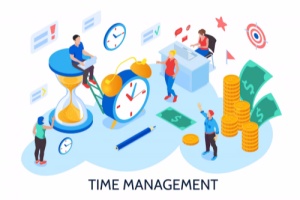Neurodiversity in the Workplace
Simply put, neurodiversity refers to the unique way people’s brains work. No two people are the same.
Most of us are neurotypical. This means we think, perceive information, and act in ways that are deemed to be normal. But some of us, in fact, around one in five of us, are neurodivergent.
Neurodivergence means having a mind that functions in ways that diverge significantly from what is considered “normal” or neurotypical. It might include people who are autistic, dyslexic, who have ADHD, Tourettes, dyscalculia, or any number of different neurodivergences.
In recent decades, our understanding of neurodivergence, as well as our assumptions, have changed, helped in large part by the Model of Social Disability, which argues that people are disabled by barriers in society, not by their own difference or impairment.
In other words, rather than trying to change people so they meet what society defines as “normal,” why not change society’s expectations instead? For example, instead of expecting an autistic colleague to make eye contact when talking, why not challenge why eye contact is needed in the first place?
Just like all types of diversity, neurodiversity provides similar benefits to organizations. Neurodivergent people often think differently, and because of this, they can bring different strengths, viewpoints and expertise to the table. So what can you do to support neurodivergent people in your workplace?
First, ensure your hiring practices are inclusive. Often a poorly written job advert or an unclear interview process can put people off applying. Check job adverts for bias and make sure that they’re clear and concise, focusing only on the key strengths and talents you require.
Be specific about what candidates can expect from your recruitment process too. For example, who’s the hiring manager? When’s the deadline for applications? What will the interview process include?
Build awareness in your workplace by opening up the conversation about neurodiversity. Run internal campaigns and talks. If you are neurodivergent yourself, consider sharing your story with colleagues.
Also, signpost relevant support policies and information. Encouraging awareness of neurodiversity and the challenges neurodivergent colleagues face in the workplace can help to build trust and understanding, as well as challenge negative assumptions and stereotyping.
Neurodivergent workers are protected against discrimination by the law in some countries. And workplaces are required to provide reasonable adjustments to support them. These adjustments could take the form of things like noise-canceling headphones, dedicated desks, regular breaks, or quiet areas. But they’ll largely depend on the individual in question. So avoid making assumptions. Instead, be sure to ask them what they find most helpful.
Flexibility can benefit all employees, neurotypical and neurodivergent. Ask your colleague how they would like to work. Would they, for instance, prefer detailed instructions and deadlines? Or are they happy to work autonomously? Do they prefer set working hours or shift patterns? Find what works for them and do what you can to provide the right support.
Finally, there’s a saying. “If you’ve met one autistic person, you’ve met one autistic person.”
Remember, everyone is unique. Not all people with autism will be the same. Nor will every person who has dyslexia or ADHD. The behaviors and traits associated with neurodivergent conditions are many and varied. And so what works for one person may not work for another. Focus on each person’s unique abilities and adapt support based on what they find most helpful.
Let’s recap. In this video, you’ve learned the difference between neurodiversity and neurodivergence. And you’ve discovered five ways you can support neurodivergent employees in your organization. From creating inclusive hiring practices and encouraging awareness to being flexible and adapting your workplace, so it works for everyone, not just some.















